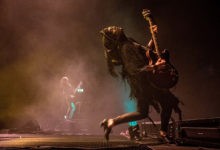Legal Expert Says MetaBirkin Project Intended to Use Hermès’ Brand for Economic Gain

Non-fungible token (NFT) artist Mason Rothschild was in the wrong with his MetaBirkins NFT project, Olta Andoni, chief compliance officer at financial firm Enclave Markets, told CoinDesk TV on Thursday.
“The real intent of Mason Rothschild was to piggyback, not only on the reputation [of Hermès’], but … for his own economic benefit,” Andoni, an adjunct professor of law at the Chicago Kent College of Law, said on “First Mover.”
Earlier this week, the Paris, France-based retailer won its lawsuit against Rothschild that claimed its trademark was being diluted by the MetaBirkin project. Hermès also claimed customers would be confused by Rothschild’s project and fooled into buying virtual goods not associated with the luxury brand.
Andoni said consumer protection was one of the main concerns of the nine-person jury. Not only were they curious about the case, she said, but “they understood also that … we’re not talking only about artistic value, but we are talking a lot more about consumer confusion.”
NFTs, which can be traded and sold, give users the ability to own a digital item. However, in this case, Andoni said Rothschild intended to prop up his own brand and drive sales on the back of Hermès’ famous Birkin bags. She said Rothschild was promoting the project via his social media channels and website.
At the time of its release, the digital furry bags were priced at $450 each, about 0.1 ETH. The collection garnered $1 million in sales by January of last year before being removed from online marketplaces. Hermès filed suit against Rothschild in January 2022.
During the case, Rothschild’s counsel argued the artist’s artistic expression was protected under the U.S. Constitution’s First Amendment. Judge Jed S. Rakoff, however, denied Rothschild’s motion to include testimony from art critic Blake Gopnik, who studies Andy Warhol. In a tweet Rothschild had likened his work to Warhol’s famous Campbell’s tomato soup can, including a copy of a letter from Campbell’s admiring Warhol’s artwork.
According to Andoni, Warhol’s soup cans had “a lot more artistic relevance,” adding that Rothschild’s very short disclaimer about the project was not enough of an argument to keep him safe from a lawsuit.
The case is among one of the first to tackle free speech and trademark infringement. However, Adoni said the verdict won’t stop some artists from doing their own NFT projects, so she expects to see similar cases in the future. Nonetheless, the verdict may prompt artists and brands to approach NFTs and the metaverse differently.
“This goes back to how much brands are interested in the metaverse, but at the same time they need to protect their IP [intellectual property],” Andoni said, adding that is what matters to brands the most.
She suggested a regulation, or “some precedent for courts,” would be helpful for artists that are making art and working with well-known brands.
“At the same time, in order for brands to truly approach the metaverse and NFTs, we have to understand that laws are going to be applicable to NFTs as well,” she said. “Just because you’re creating this digital art doesn’t mean that no consumer protection laws are applicable there.”






 Bitcoin
Bitcoin  Ethereum
Ethereum  Tether
Tether  USDC
USDC  TRON
TRON  Dogecoin
Dogecoin  Cardano
Cardano  Bitcoin Cash
Bitcoin Cash  Chainlink
Chainlink  LEO Token
LEO Token  Zcash
Zcash  Monero
Monero  Stellar
Stellar  Litecoin
Litecoin  Hedera
Hedera  Dai
Dai  Cronos
Cronos  OKB
OKB  Tether Gold
Tether Gold  Ethereum Classic
Ethereum Classic  KuCoin
KuCoin  Gate
Gate  Algorand
Algorand  Cosmos Hub
Cosmos Hub  VeChain
VeChain  Stacks
Stacks  Tezos
Tezos  Dash
Dash  TrueUSD
TrueUSD  IOTA
IOTA  Basic Attention
Basic Attention  Theta Network
Theta Network  Decred
Decred  NEO
NEO  Synthetix
Synthetix  Qtum
Qtum  0x Protocol
0x Protocol  Ravencoin
Ravencoin  DigiByte
DigiByte  Zilliqa
Zilliqa  Nano
Nano  Holo
Holo  Siacoin
Siacoin  Numeraire
Numeraire  Waves
Waves  Status
Status  Enjin Coin
Enjin Coin  Ontology
Ontology  BUSD
BUSD  Hive
Hive  Lisk
Lisk  Pax Dollar
Pax Dollar  Steem
Steem  Huobi
Huobi  NEM
NEM  OMG Network
OMG Network  Bitcoin Gold
Bitcoin Gold  Augur
Augur